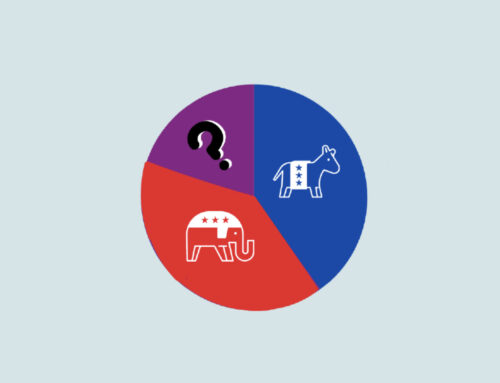In the days leading up to the November midterms, pundits on both sides of the aisle were predicting a tough night for Democrats. We now know that the conventional wisdom was just wrong. But why?
Pundits – and strategists – believed the hype, downplaying Democrats’ electoral chances largely based on three falses premises:
- Democrats couldn’t break the historic trend. Over the last century, the President’s party has averaged a loss of 28 House seats and four Senate seats in midterm elections.
- Democrats weren’t campaigning on issues the American people cared about. Across the country, Democrats made the election a choice between their popular policies and Republican extremism.
- Partisan and bad polls, from the likes of Trafalgar, InsiderAdvantage, McLaughlin & Associates, and others, manufactured and amplified these inaccurate narrative skewed polling aggregators.
In the Senate, it was reported that Dems were scrambling to avoid a shock loss of Patty Murray’s seat in Washington. Colorado was deemed a “sleeper state” where GOP challenger Joe O’Dea had a decent chance to knock off incumbent Michael Bennet, and in the week before the election, POLITICO moved Maggie Hassan’s New Hampshire seat from Lean D to Toss Up, a move that signaled a good possibility of the incumbent Democrat being defeated.
But, none of this happened. The much hyped red wave was just a red mirage. In fact, Democrats defied the historic midterm odds, comfortably held on to Senate control, and enjoyed a pretty good election night considering the circumstances. So, let’s dive into the data in each of these races and discuss what actually happened.
Washington State
As election day approached, polls were showing a tightening race, as one from Moore Information Group even found the race to be a ‘dead heat’.
- Murray won the election by 15 points, only 3 points less than the comfortable margin she delivered in her 2016 victory and over 10 points better than the RealClearPolitics average was showing in the days leading up to the election.
- The modeled Democrat to Republican turnout advantage actually increased in 2022 compared to 2018. In 2018, modeled Democrats outvoted modeled Republicans by 23 points. In 2022, Democrats increased that number to almost 30 points.
- Democrats performed better in rural and suburban areas this cycle than in 2018, securing 51.2% of suburban voters compared to 47.1% in 2018 and 37.5% of rural voters compared to 34% in 2018.
- Additionally, Murray was able to increase the Democratic margin amongst women, as Democrats saw a +40 point margin in 2022 compared to the +34 point margin in 2018.
Clearly, the tightening polls and media hysteria played a role in the public perception that this race was ever that close. It wasn’t.
Colorado
In the first week of November, RealClearPolitics moved the Colorado Senate race from Lean D to Toss Up, and Republicans were feeling increasingly positive about their chances.
- On election day, Bennet cruised to a 14 point victory, 9 points better than what the RealClearPolitics polling average was predicting, winning with nearly 56% of the vote share. Compare this to 2016, when Bennet won his race by only 6 points and was only able to secure 50% of the vote.
- Bennet increased the Democratic margin amongst women, as Democrats saw a +19 point margin in 2022 compared to a +16 point margin in 2018.
- Bennet also posted an impressive margin amongst first time voters, as 70% of first timers went Democratic, compared to 59% in 2018.
New Hampshire
Of the three seats highlighted, New Hampshire presented the best opportunity for a Republican gain as polls were consistently showing incumbent Maggie Hassan with only a one or two point lead over Trump endorsed challenger Don Bolduc. Again, it didn’t pan out for Republicans.
- Hassan won re-election by 9 points, a comfortable margin in comparison to what polls were showing, as the RealClearPolitics average predicted a margin of just 1.5 points.
- In 2016, New Hampshire was much closer, as Hassan only won by .1%, or 1,000 votes, compared to the 56,000 vote margin she won by in 2022.
Now, you can clearly see that the hype about these races in the final days was much to do about nothing. Inaccurate polls flooded the zone and the media played into the red wave narrative. In this world, it’s important to rely on the data to truly understand what is happening, and what might happen down the road.





